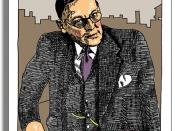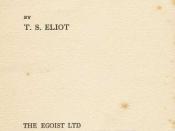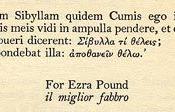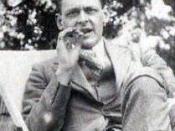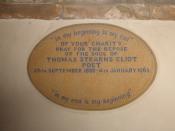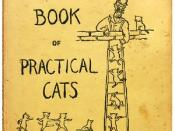T. S. Eliot Thomas Stearns Eliot (1888-1965) was "one of the most distinguished literary figures of the 20th century,"� (The Columbia Encyclopedia). He attended such notable schools as Harvard, the Sorbonne, and Oxford. Though born in St. Louis, Missouri he is considered an American-British poet and critic. He moved to England after graduating from Harvard.
Eliot's first published collection of poems was Prufrock and Other Observations in 1917 (Encarta Encyclopedia). He gained international attention after publishing The Waste Land (1922), edited by Ezra Pound. The Waste Land, a five-part poem, had a fragmented form with a unifying theme of despair. A prominent symbolism in The Waste Land is derived from the story of the quest for the Holy Grail. Eliot made a conversion to the Church of England in 1927. After which he focused more of serenity and religious humility in his work, Ash Wednesday (1930). He presented that suffering may result in purity.
Beyond poetry, Eliot wrote plays, essays, lectures (Encarta Encyclopedia). He actually gave up poetry for the last twenty years of his life to instead focus on other forms of writing. After his death, T. S. Eliot's works lived on, being newly published or published in new ways. A children's book of poetry, Old Possum's Book of Practical Cats, appeared on Broadway as Cats (1981) by Andrew Lloyd Webber. Forty previously unpublished poems were compiled into Inventions of the March Hare: T. S. Eliot Poems 1909-1917 in 1996. Prejudices such as anti-Semitism, racism, and sexism have been sensed in his works, yet he remains "one of the most important figures in modern literature."� Works Cited "Eliot, T. S."� Microsoft Encarta Encyclopedia 2000. Ed. Alt, Gary. CD-ROM. 2000 ed. Redmond, WA. Microsoft Corporation.
"Eliot, T. S."� The Columbia Encyclopedia, 6th ed. New York: Columbia University Press, 2000. 15 October 2000 .
